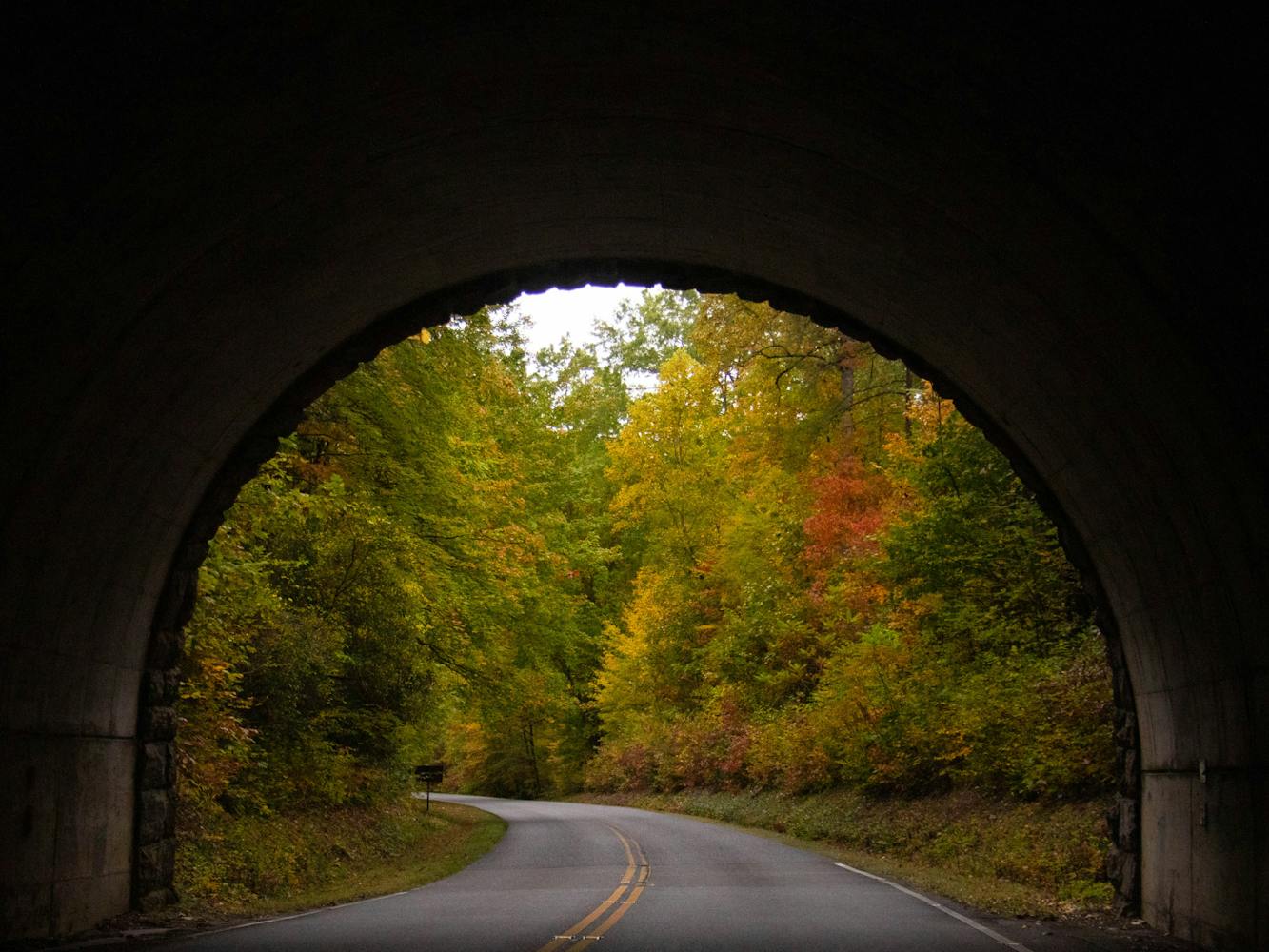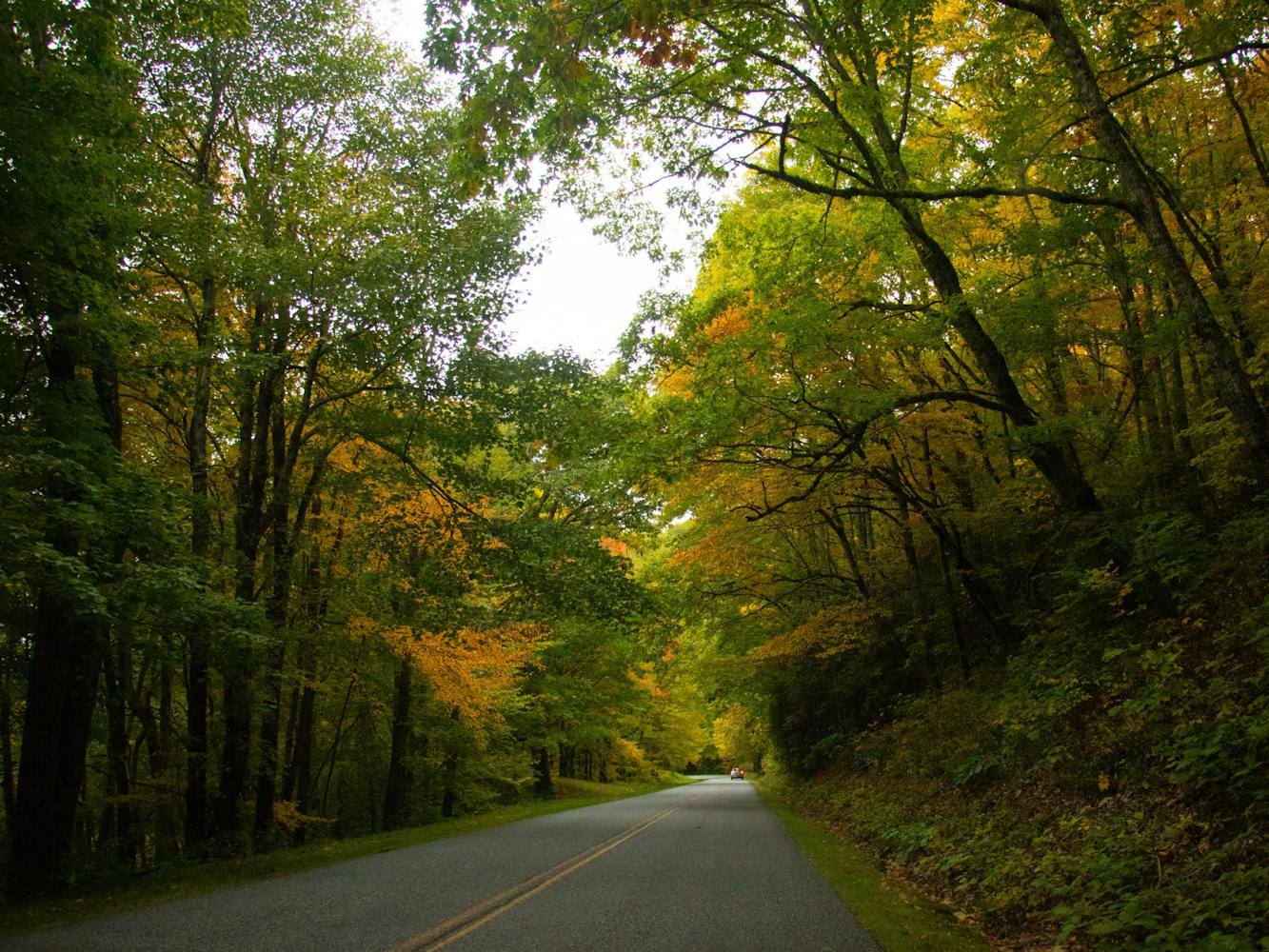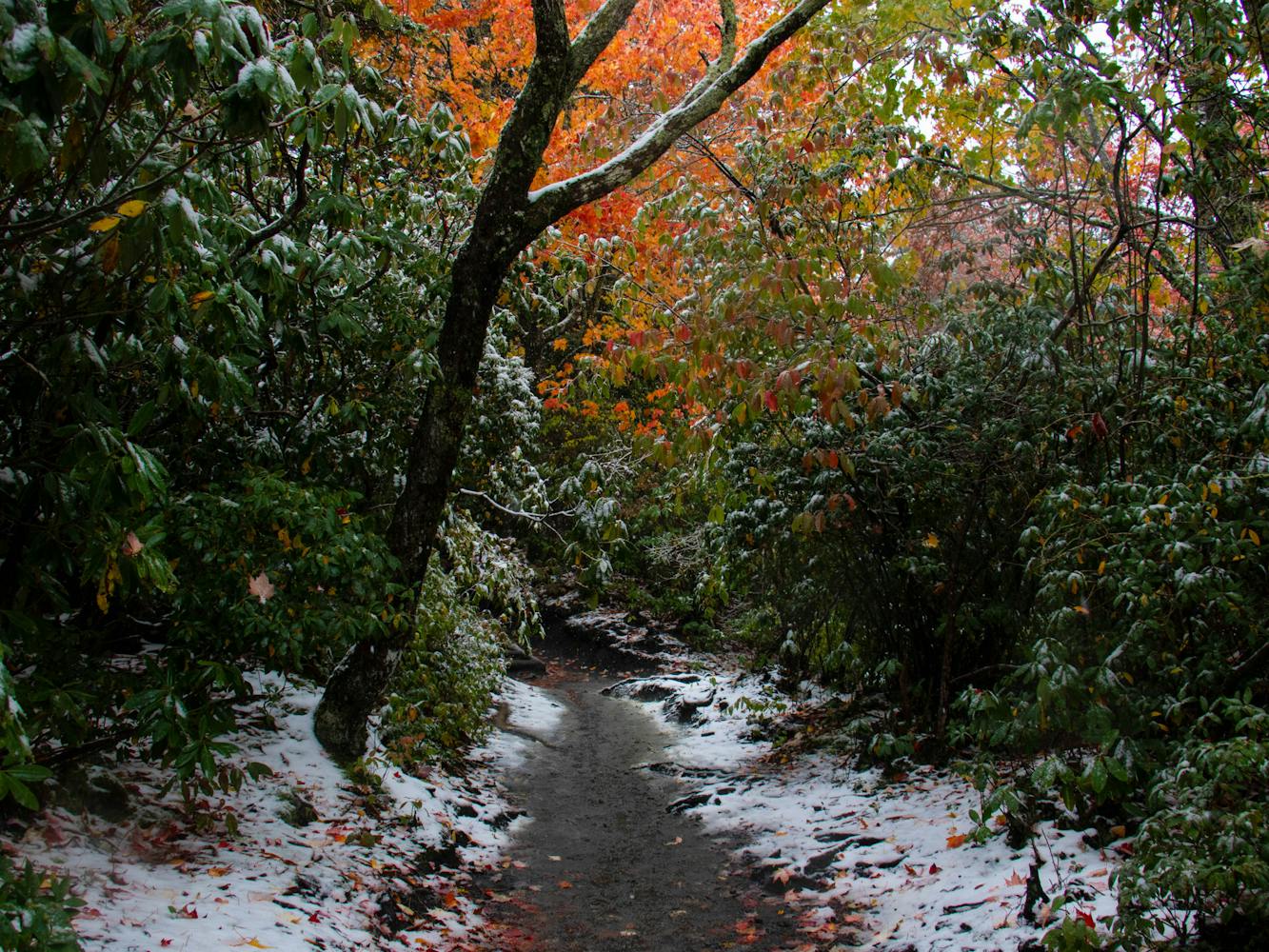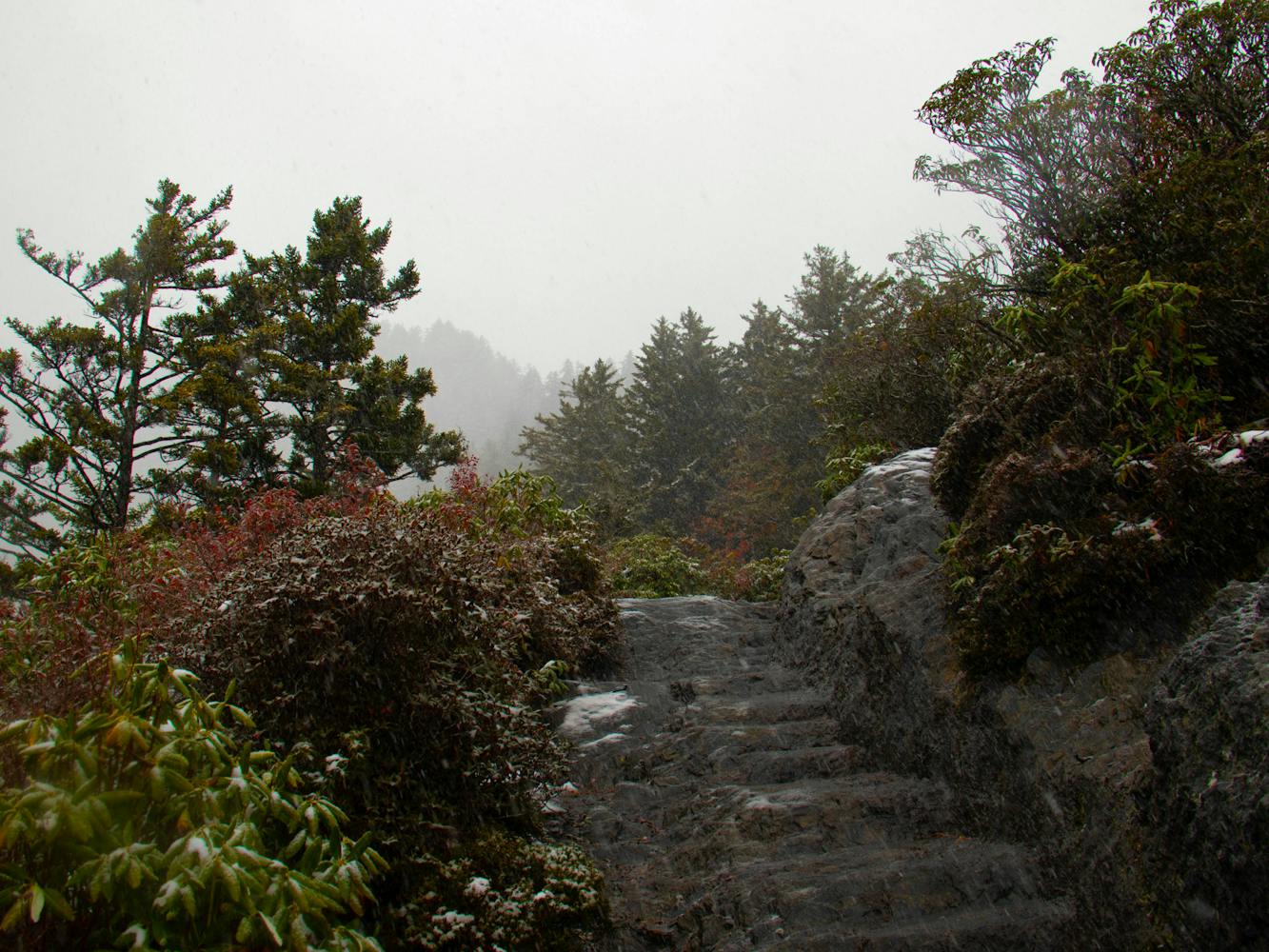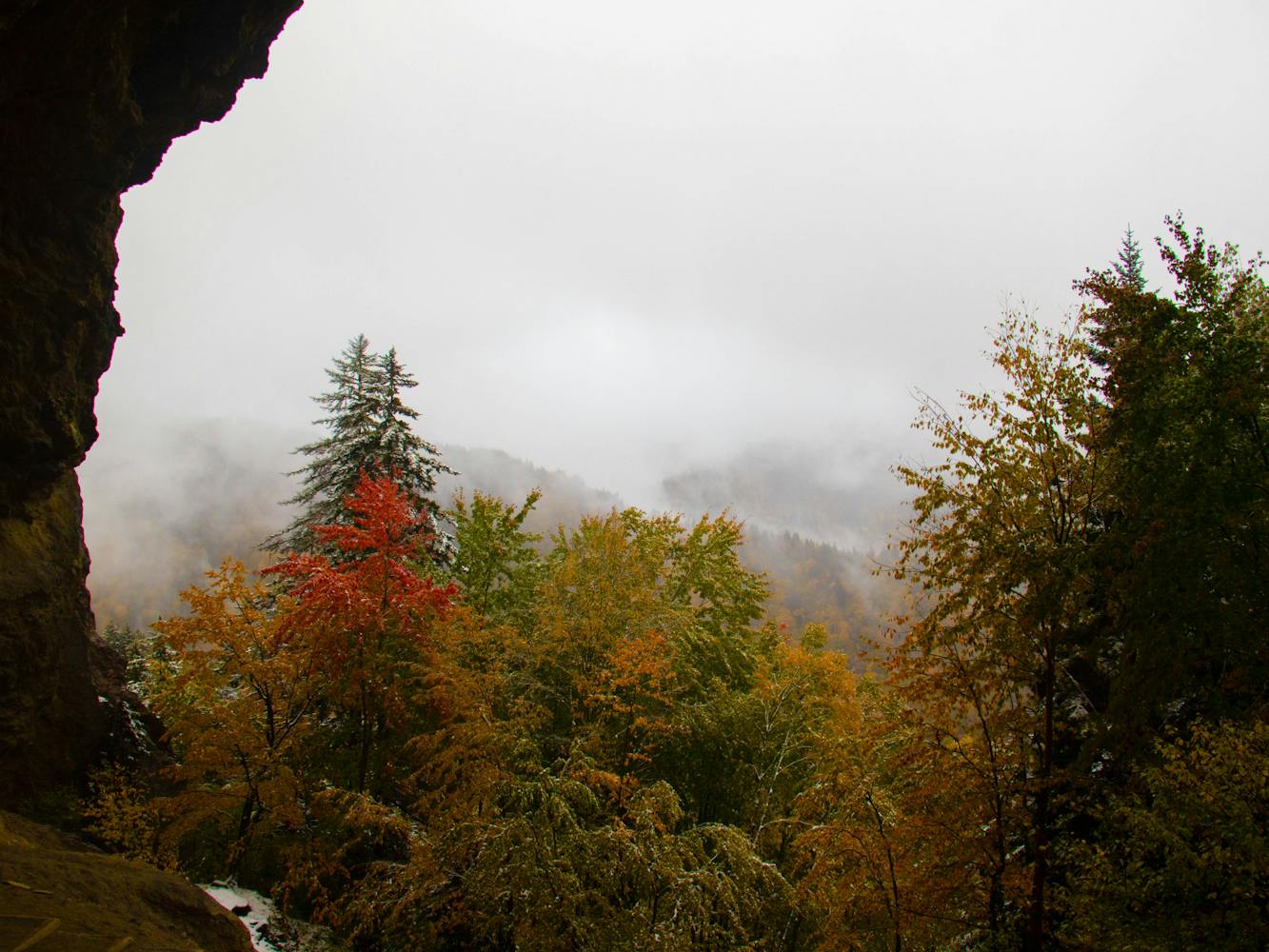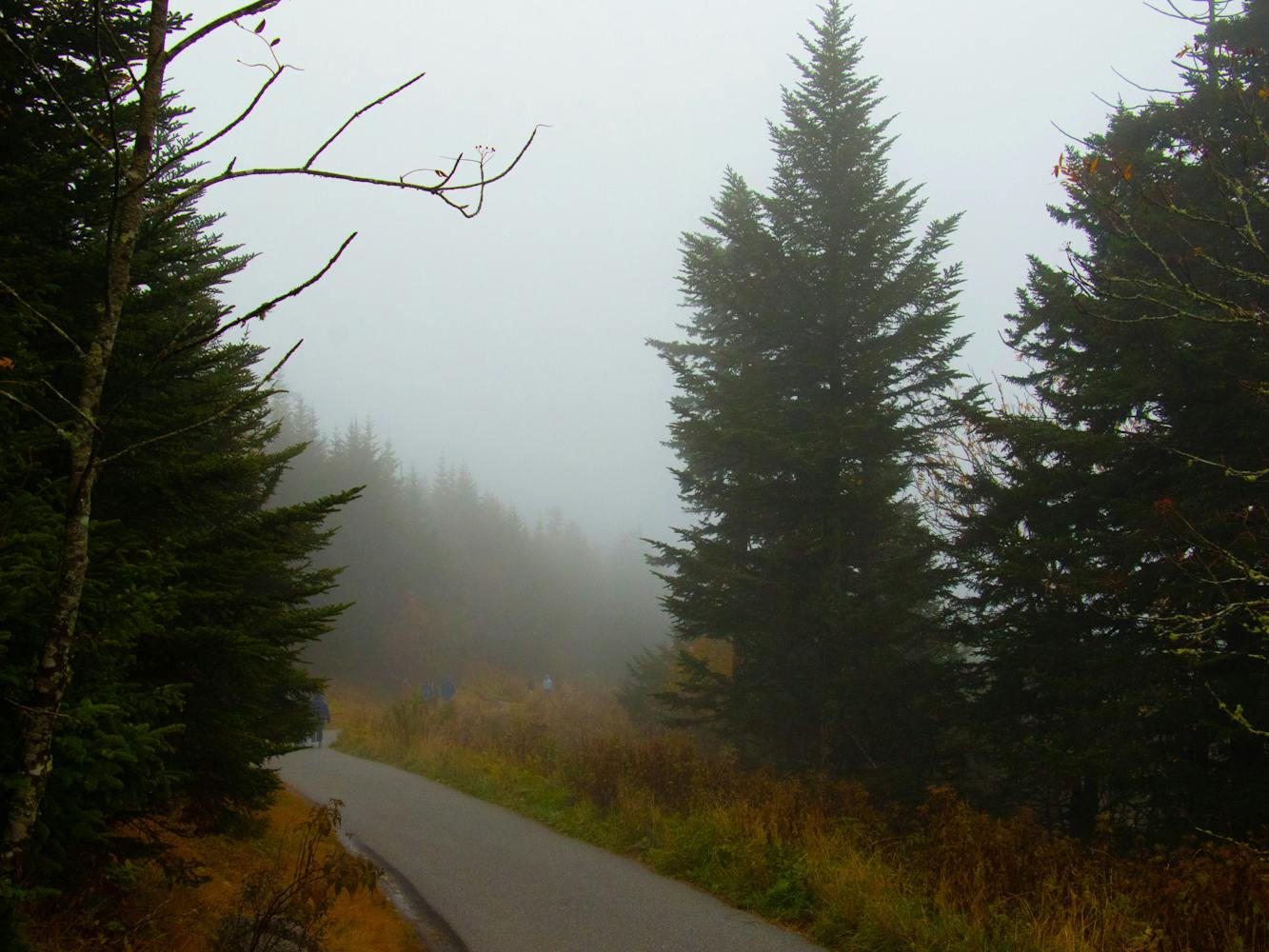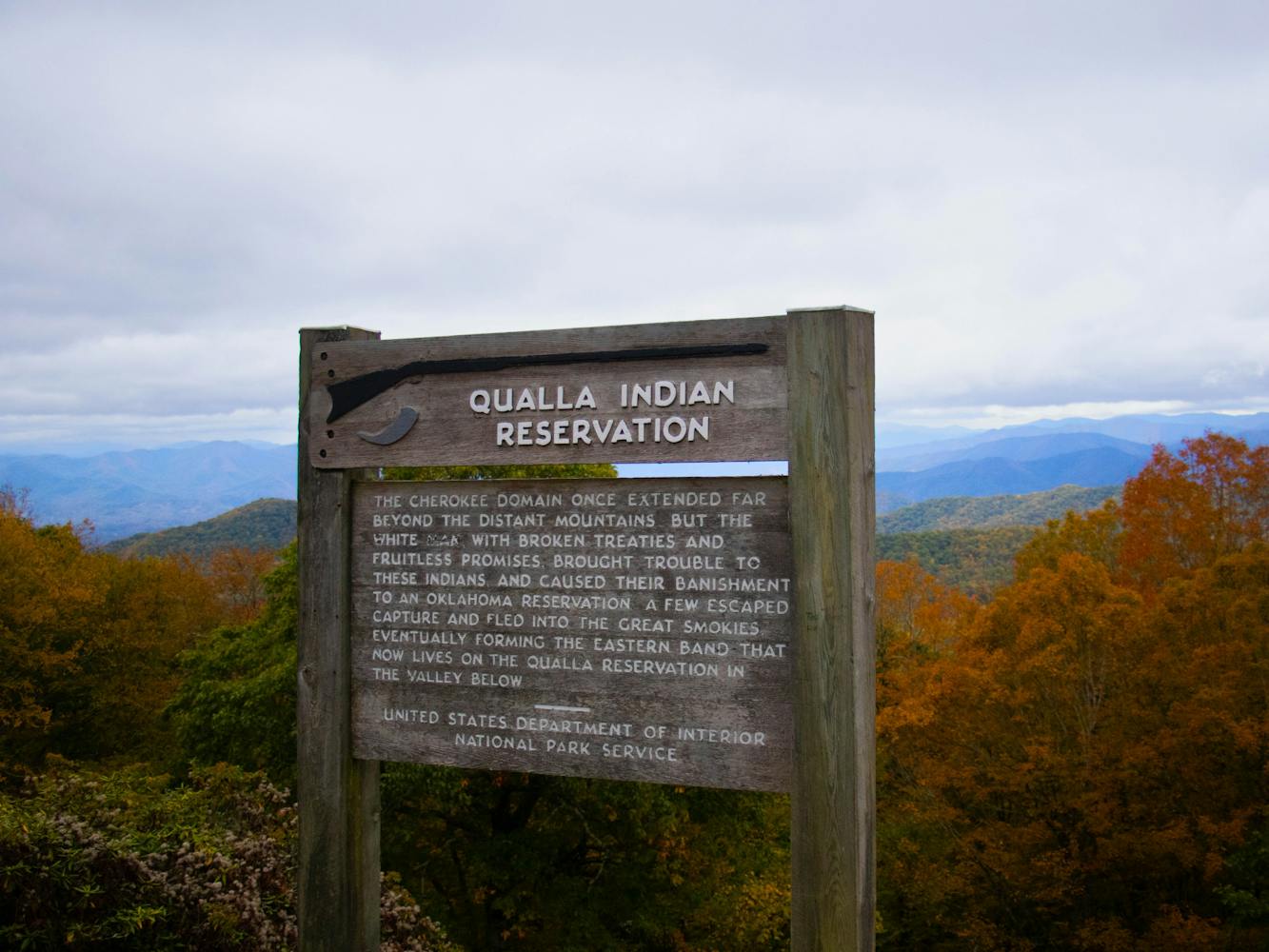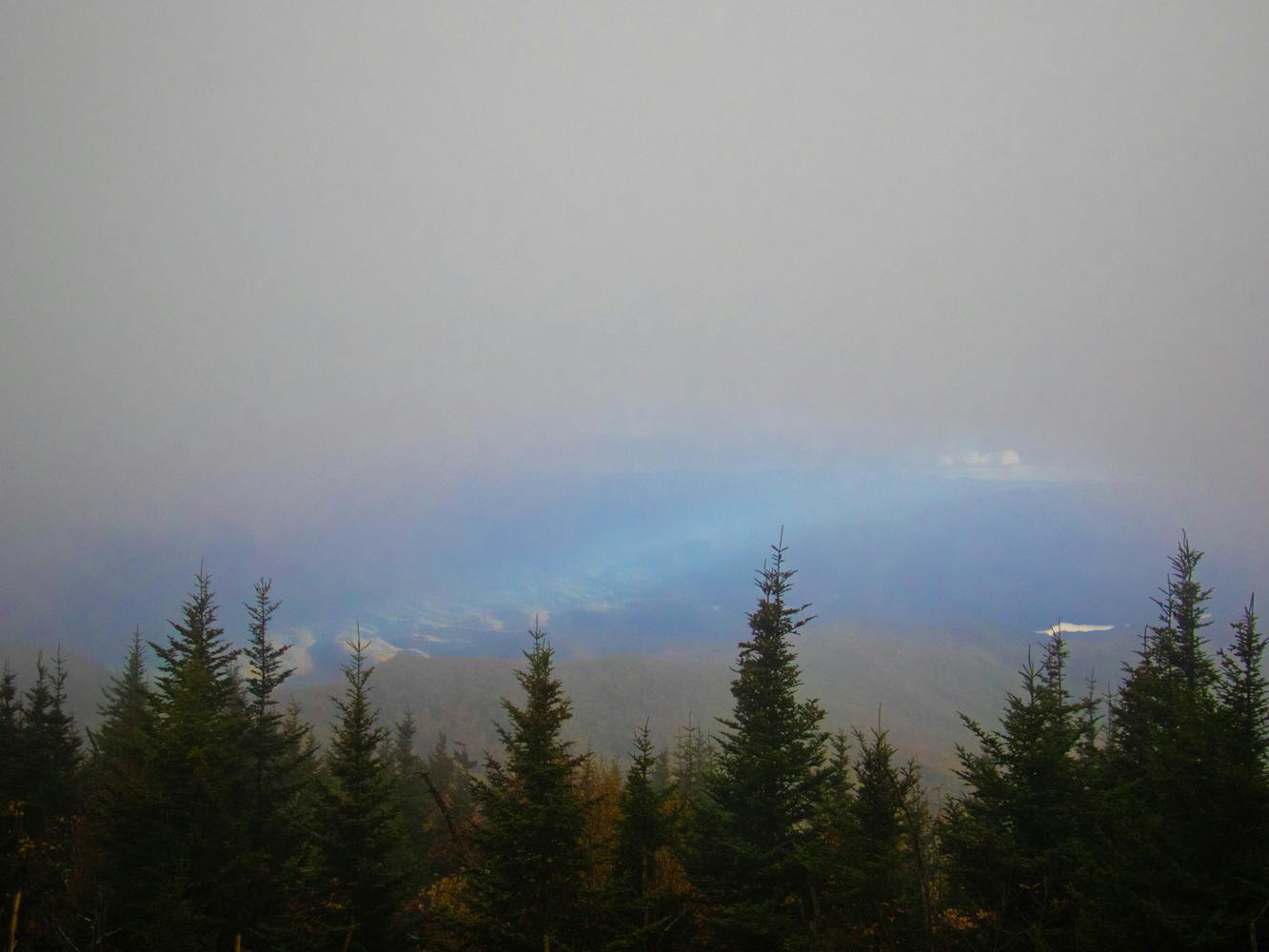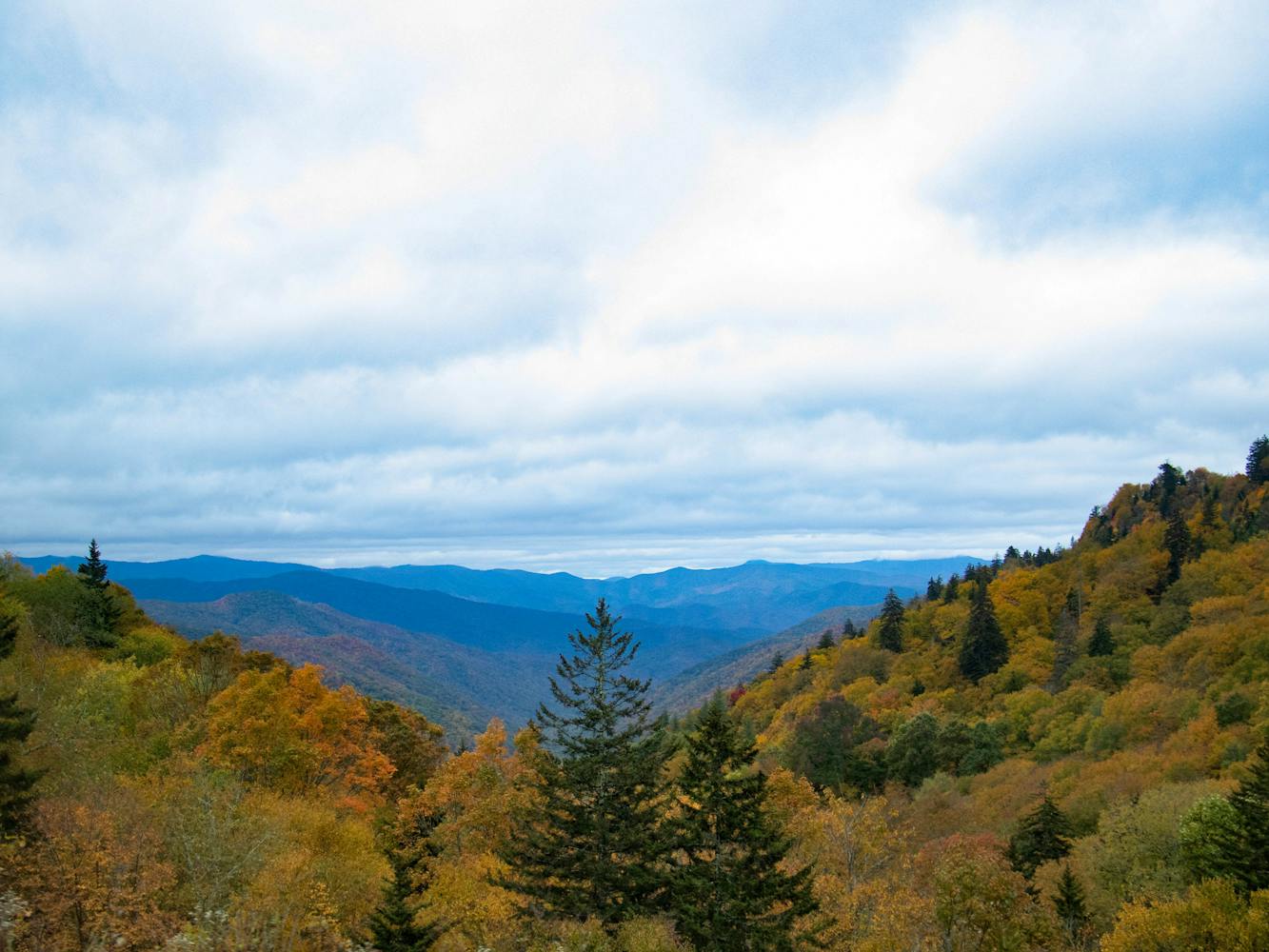The Gardens are great, but they're not the only place in town you can go to get some fresh air. Browse this Chronicle photo gallery for a quick profile on one of the many natural gems you can visit right here in North Carolina.
Tunnel Vision and You are now approaching the park
Visitors are greeted by Fall colors as they enter the Great Smoky Mountains National Park.
Where seasons collide
While Fall weather is only just arriving here in Durham, Fall and Winter are already colliding in the Great Smoky Mountains.
Snow on a bluff
Traces of snow can also be found along the park's Alum Cave Trail.
'Hike the Smokies'
Along with snow, there are views of smoke-like fog rolling over the mountain trails. People who hike 100, 250 or 500 miles have an opportunity to record their name in the "Hike the Smokies" record book.
Nearing Clingmans Dome
Clingmans Dome, the highest point in the Great Smoky Mountains National Park, is also the highest point in Tennessee and less than a five-hour drive from Durham.
Cherokee-owned
Adjacent to the Great Smoky Mountains is the Qualla Boundary, which is home to Cherokee people. Unlike this sign suggests, the Eastern Band of Cherokee Indians do not consider Qualla a reservation since it is not a reservation that was given to them. Rather, they purchased the land in the 1800s — the same century the United States federal government forcefully removed 60,000 Indigenous Americans from their land, killing more than 13,000 during the Trail of Tears.
'Shacognage'
Prior to Euro-Americans referring to the region as the "Great Smokies", the native Cherokee people named the area "Shacognage" or “place of the blue smoke”.
The science behind the 'smoke'
The visibly-blue haze surrounding the mountains comes from the blue light scattered by organic compounds released into the air by the dense vegetation.
One of the largest tracts of wilderness
Hidden within the mountains, this haze is one of the largest tracts of wilderness in the East, protecting around 65 species of mammals and 200 varieties of birds.
What's in the water?
Get The Chronicle straight to your inbox
Sign up for our weekly newsletter. Cancel at any time.
These stretches of wilderness are accented with streams that protect over 67 native fish species and 80 types of reptiles and amphibians.

